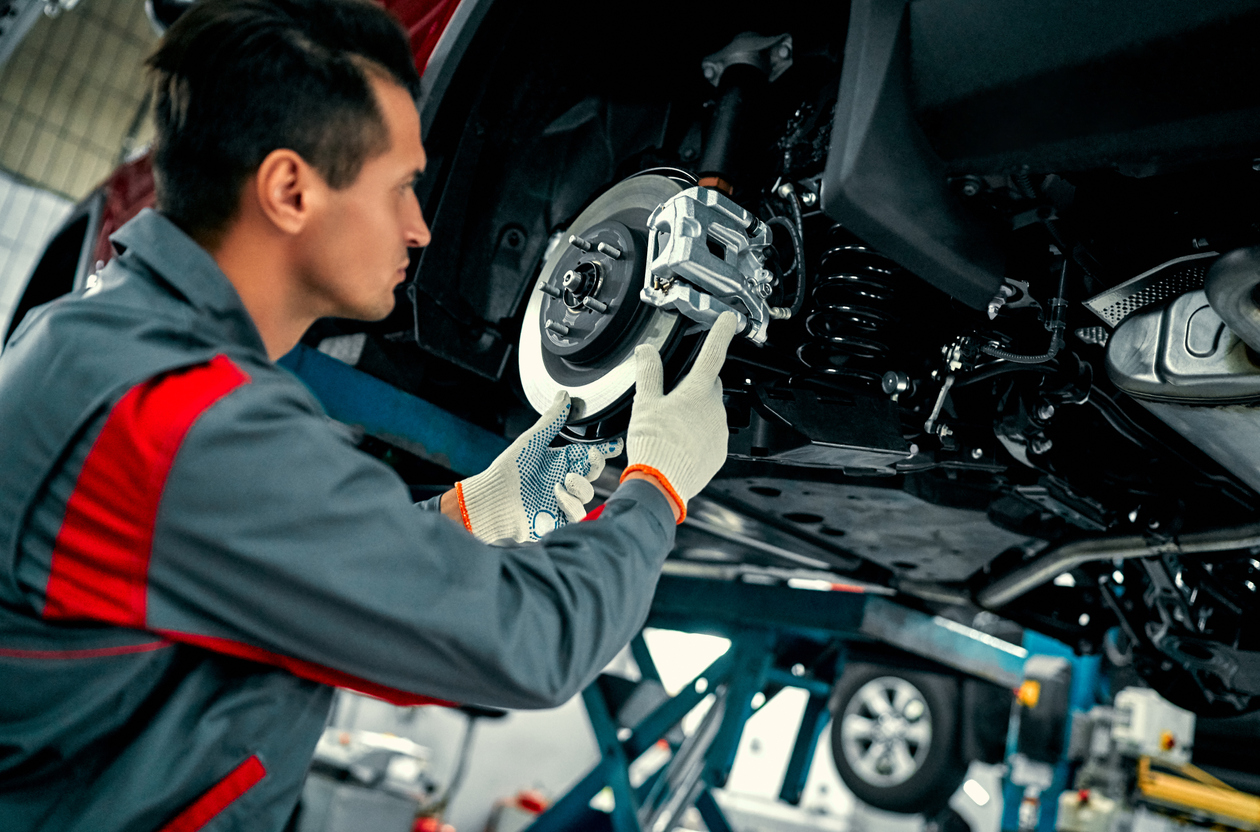

Today’s blog is focused on one of the most vital parts of your vehicle’s system: the brakes! Your brakes give you the ability to slow down, stop, and avoid serious harm or accidents. Let’s learn a little more about what to look for, how they work, and how to repair them!
Your brakes should be serviced every 20,000-60,000 miles, inspected every six months during an alignment/rotation, and if you’re using your car for frequent long trips, lots of commuting, or even as a rideshare you may wish to have them checked or inspected more frequently.
If you don’t get your brakes inspected and/or serviced regularly, this can cause the brake pads to wear down and grind metal-on-metal against the rotors. This can lead to improperly stopping and higher risk of accidents and even death. Your brakes should bring your vehicle to a complete stop with zero audible reaction. If you notice a screeching, squealing, or grinding sound when you press the brake pedal, it’s time to bring them in for a service. This noise is caused by the “wear indicator” on your brake pads making contact with the rotor, indicating they are in dire need for replacement and repair.
When it comes to selecting the right brake lines and brake pads for your vehicle, you should evaluate your driving frequency, distance, driving speed average, and location. Your mechanic will help you select the best options for your make/model and driving habits.
Check out this helpful video about how Brakes work from Donut Media on Youtube:
We know that buying or servicing a vehicle isn’t a part of everyone’s daily life habits, so we’re here to help shine a light on important terms to know with today’s Classic Auto Group’s Automotive Terminology Decoder! Here are some helpful tips and terms to know when it comes to speaking about your vehicle’s brakes and parts:
Brake fluid
The fluid used in the hydraulic brake system.
Brake lines, hoses & connections
Tubes and their connections that carry brake fluid between the various components in a vehicles brake system.
Brake linings
High-friction, heat-resistant material that is attached to the brake shoes in a rear drum brake system.
Brake master cylinder
A device that stores brake fluid and hydraulically forces it through the brake lines to the brakes when the brake pedal is depressed.
Brake pads
High-friction material attached to a metal backing plate; these may be made of ceramic or a combination of metals and organic materials.
Brake pedal
A device used to control a vehicles brakes.
Brake pedal spring
A spring attached to the pedal assembly that provides some resistance during pedal depression and also assists in returning the pedal to an upright position.
👇️Let us know in the comments on our social media what other helpful terms and tips you’d like to learn on our next Automotive Terminology post! 👇️


![[Facebook]](https://www.classickiaonline.com/blogs/294/wp-content/plugins/bookmarkify/facebook.png)
![[LinkedIn]](https://www.classickiaonline.com/blogs/294/wp-content/plugins/bookmarkify/linkedin.png)
![[Twitter]](https://www.classickiaonline.com/blogs/294/wp-content/plugins/bookmarkify/twitter.png)
![[Yahoo!]](https://www.classickiaonline.com/blogs/294/wp-content/plugins/bookmarkify/yahoo.png)
![[Email]](https://www.classickiaonline.com/blogs/294/wp-content/plugins/bookmarkify/email.png)



 Warranties include 10-year/100,000-mile powertrain and 5-year/60,000-mile basic. All warranties and roadside assistance are limited. See retailer for warranty details.
Warranties include 10-year/100,000-mile powertrain and 5-year/60,000-mile basic. All warranties and roadside assistance are limited. See retailer for warranty details.